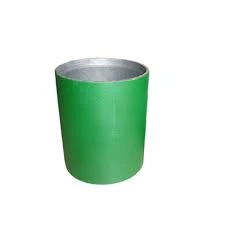- Afrikaans
- Albanian
- Amharic
- Arabic
- Armenian
- Azerbaijani
- Basque
- Belarusian
- Bengali
- Bosnian
- Bulgarian
- Catalan
- Cebuano
- Corsican
- Croatian
- Czech
- Danish
- Dutch
- English
- Esperanto
- Estonian
- Finnish
- French
- Frisian
- Galician
- Georgian
- German
- Greek
- Gujarati
- Haitian Creole
- hausa
- hawaiian
- Hebrew
- Hindi
- Miao
- Hungarian
- Icelandic
- igbo
- Indonesian
- irish
- Italian
- Japanese
- Javanese
- Kannada
- kazakh
- Khmer
- Rwandese
- Korean
- Kurdish
- Kyrgyz
- Lao
- Latin
- Latvian
- Lithuanian
- Luxembourgish
- Macedonian
- Malgashi
- Malay
- Malayalam
- Maltese
- Maori
- Marathi
- Mongolian
- Myanmar
- Nepali
- Norwegian
- Norwegian
- Occitan
- Pashto
- Persian
- Polish
- Portuguese
- Punjabi
- Romanian
- Russian
- Samoan
- Scottish Gaelic
- Serbian
- Sesotho
- Shona
- Sindhi
- Sinhala
- Slovak
- Slovenian
- Somali
- Spanish
- Sundanese
- Swahili
- Swedish
- Tagalog
- Tajik
- Tamil
- Tatar
- Telugu
- Thai
- Turkish
- Turkmen
- Ukrainian
- Urdu
- Uighur
- Uzbek
- Vietnamese
- Welsh
- Bantu
- Yiddish
- Yoruba
- Zulu
perforated pup joints
Understanding Perforated Pup Joints A Key Component in Oil and Gas Operations
In the oil and gas industry, the quest for efficient and effective extraction techniques drives the continuous evolution of drilling equipment and methods. One critical element in these operations is the perforated pup joint. This specialized component plays a significant role in enhancing the performance of downhole tools and optimizing production workflows.
What are Perforated Pup Joints?
Perforated pup joints are short lengths of pipe that have specific perforations along their body. These perforations are strategically placed to allow for the free flow of fluids, such as oil, gas, or water, between different sections of the wellbore. These joints vary in length and diameter, making them versatile for various applications, including well completion, workovers, and other downhole interventions.
The term pup joint refers to a short piece of pipe, typically less than 30 feet in length, used to connect sections of tubing or casing. When these joints are perforated, they can enhance the overall performance of the completion assembly by increasing the effective flow area, minimizing pressure loss, and facilitating the management of reservoir fluids.
Applications in Oil and Gas Operations
1. Well Completion Perforated pup joints are frequently utilized in well completion processes. After a well has been drilled, operators use these joints to ensure that the production tubing can effectively communicate with the reservoir. By allowing fluids to flow through the perforations, these joints help extract hydrocarbons more efficiently.
2. Enhanced Oil Recovery (EOR) In the context of enhanced oil recovery, perforated pup joints are integral in optimizing the injection of water or gas into the reservoir. The perforations allow for better distribution of injectants, which can improve oil recovery rates.
3. Workover Operations During workover operations, where maintenance or upgrades to existing wells are conducted, perforated pup joints can be employed to quickly and effectively access different zones within the wellbore. This is particularly useful in managing production from multiple zones.
perforated pup joints

4. Fluid Management Perforated pup joints also facilitate effective fluid management within the well. By enabling controlled flow rates and pressure differentials, they ensure that the well performs optimally under various operating conditions, thus extending the productive life of the well.
Benefits of Using Perforated Pup Joints
The benefits of incorporating perforated pup joints into drilling and production operations are manifold
- Increased Efficiency By allowing for greater flow rates and minimized pressure drop, perforated pup joints help in maximizing production efficiencies.
- Versatility Their adaptable design allows for use in various applications, making them suitable for a range of drilling and completion scenarios.
- Cost-Effectiveness Using perforated pup joints can lead to reduced operational costs by minimizing downtime and enhancing recovery rates.
- Improved Serviceability During maintenance or workover operations, these joints allow for easier access to different sections of the well, streamlining the overall workflow.
Conclusion
As the oil and gas industry continues to innovate, the importance of components like perforated pup joints only increases. These devices are essential in maximizing production efficiency and optimizing the recovery of valuable resources from beneath the Earth's surface. Understanding their functionality and applications is crucial for professionals in the field aiming to improve operational performance and drive successful outcomes in well management. As technology progresses, the design and application of perforated pup joints will likely evolve, further enhancing their role in the complexities of modern oil and gas extraction.
-
Tubing Pup Joints: Essential Components for Oil and Gas OperationsNewsJul.10,2025
-
Pup Joints: Essential Components for Reliable Drilling OperationsNewsJul.10,2025
-
Pipe Couplings: Connecting Your World EfficientlyNewsJul.10,2025
-
Mastering Oilfield Operations with Quality Tubing and CasingNewsJul.10,2025
-
High-Quality Casing Couplings for Every NeedNewsJul.10,2025
-
Boost Your Drilling Efficiency with Premium Crossover Tools & Seating NipplesNewsJul.10,2025







